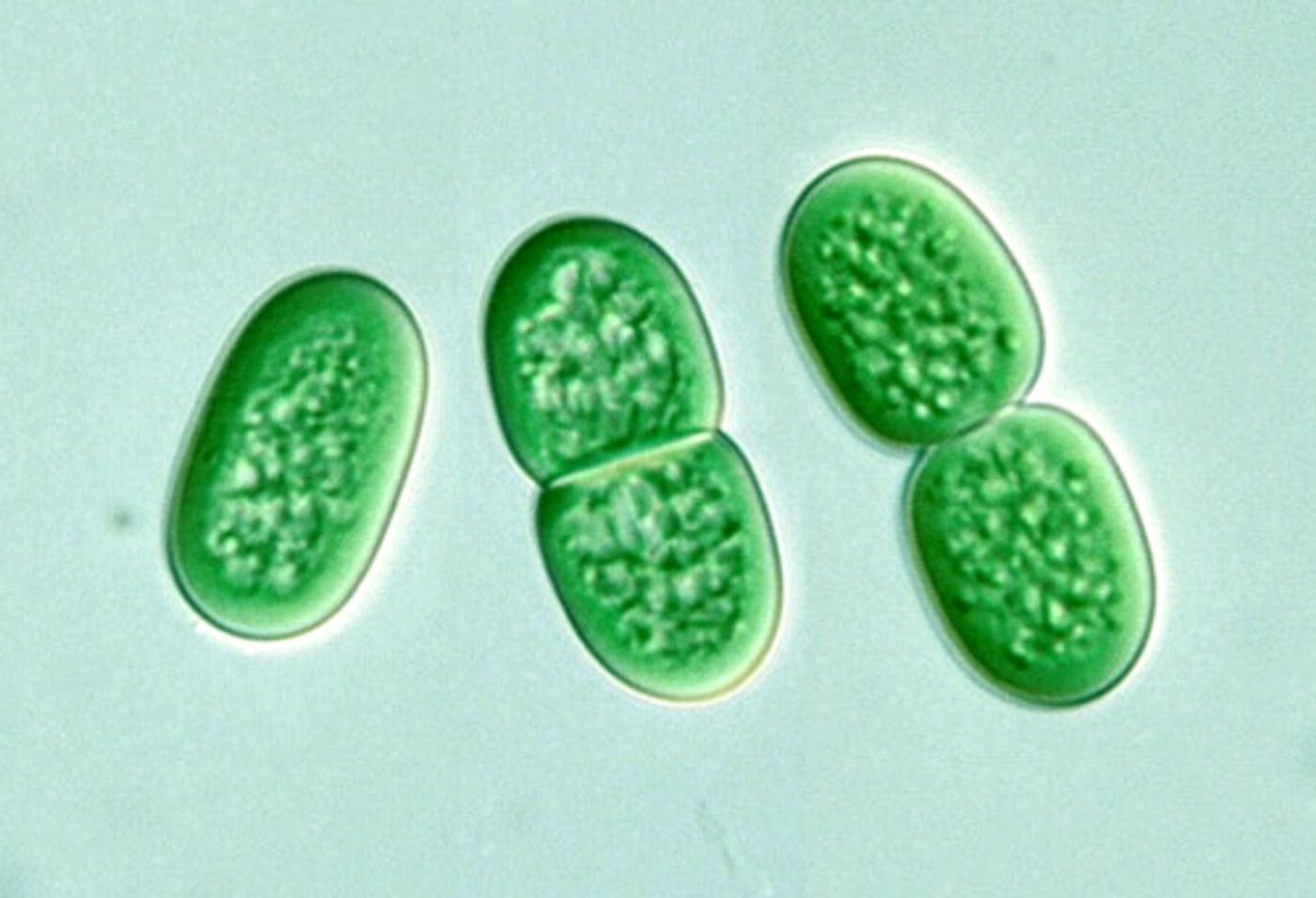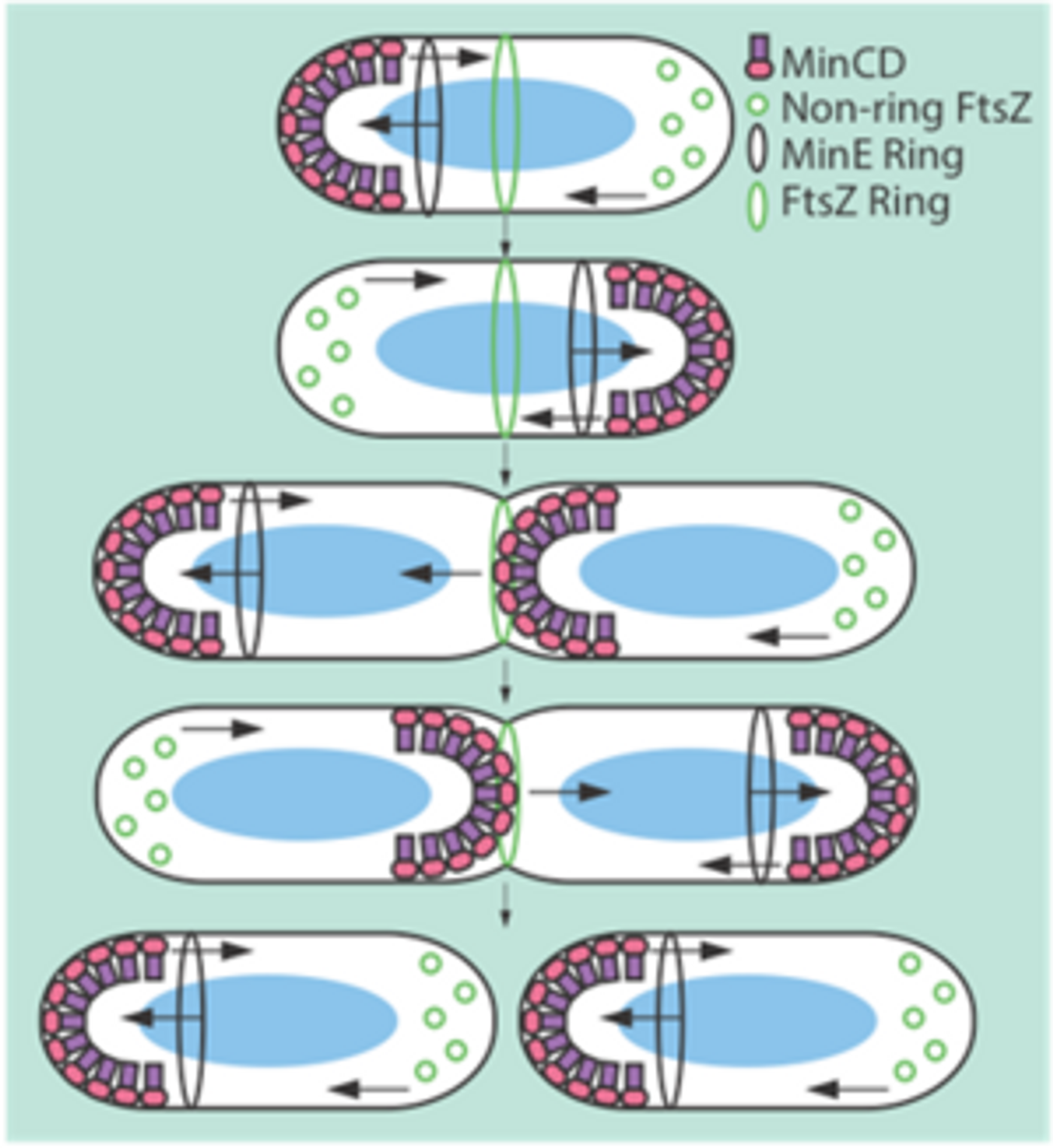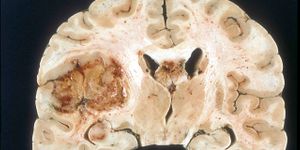Bacteria reproduce in a number of different ways. Some of the more unusual methods include
budding and
baeocyte formation. The most common method, however, is
binary fission - essentially splitting cells in two (similar to the method used by animal cells).
Binary fission seems simple enough, but the question of how cells
“find their middle” has plagued scientists for decades. In
E. coli, the
Min system is critically important for defining the midcell - the physical point at which cell division proteins (the divisome) accumulate and division occurs.
Why is it so important for
E. coli to divide at the midcell? One reason is to ensure that each daughter cells gets a complete chromosome. Place the divisome at the wrong spot, and the daughter cells could end up with too much or too little genetic material. That’s bad news.
The Min system consists of three cytoplasmic proteins: MinC, MinD, and MinE. MinC and D are negative regulators of another protein called
FtsZ. FtsZ is the first divisome protein recruited to the midcell where it polymerizes into a ring and drives inner membrane constriction, ultimately separating the daughter cells.
MinC and D bind to the cell poles (each “end” of the cell), but are dislodged by MinE, which oscillates between each pole. What you end up with is a high concentration of MinC and D at the poles, and a low concentration at the midcell. This means that the FtsZ ring can only form at the midcell. Voila! Pretty nifty.
FtsZ ring formation is also inhibited by the nucleoid occlusion protein
SlmA and the DNA damage protein
SulA. SlmA binds to DNA, ensuring that a Z ring does not form near the chromosome, causing it to be unevenly distributed between daughter cells, while SulA depolymerizes Z rings if the DNA becomes damaged.
There you have it - binary fission seems simple, but it’s definitely not.
Sources:
Molecular Microbiology, UniProt, Wikipedia










